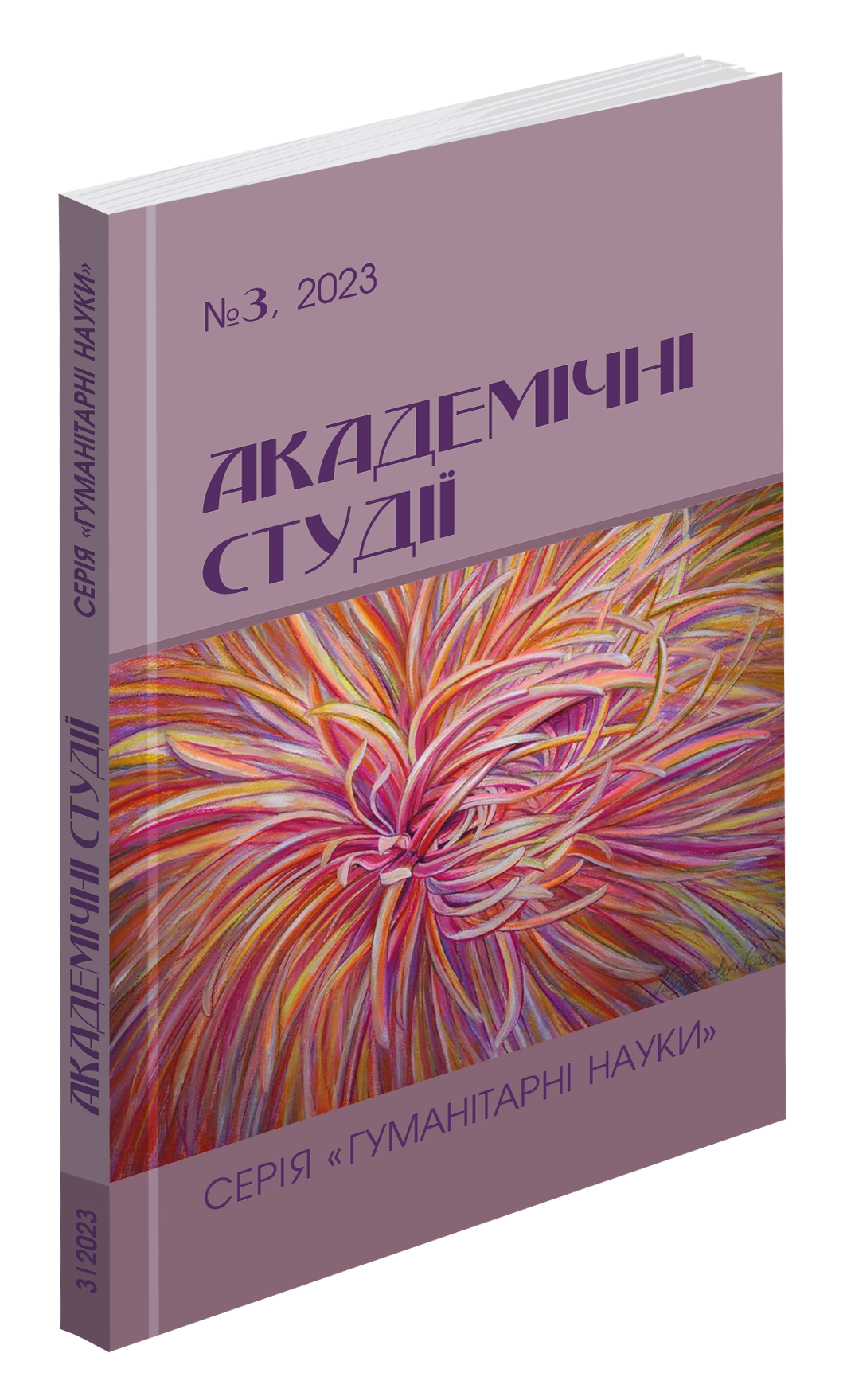Abstract
The article examines the actualizing categorical meanings of the text, in particular communicatively oriented categories that belong to the external syntactic sphere of the sentence and most often actualize sentences in the structure of the text. We analyze the text as a linguistic unit, the speech implementation of which is the discourse. Since the informativeness of the text is one of its important categorical dominants, the following main textual categories are highlighted and analyzed in detail in the work: informativeness, cohesion (meaning), continuum (logical sequence, temporal or spatial relationship of individual parts), articulation, autosemantics of individual parts (passages) of the text, retrospection (attribution to the previous content-factual information, prospection (attribution to the next content-factual information, modality (subjective-evaluative nature of thought, integration (combination of components into a single whole with relative neutralization of auto-semanticity), completeness (comprehensive expression of the author's intention), actualization (communicative and aesthetic value). In particular, it is determined that modality as a text category is the hallmark of the text. Therefore, modality indicates the relationship of the sentence content to reality integrated by the speaker, associated with the interpretation of what is communicated as real, potential or unreal.An integral textual quantity is integration, as it ensures a consistent understanding of the text from its unfolding to completion. The textual categories of actualization, realized in the functioning of supraphrase units, which are formed from several meaningfully consecutive sentences, both simple and complex, and reveal some part of the text – a microtheme – are analyzed in particular in detail. It was determined that special actualized semantics in supraphrase units are carried by repetitive object components or appeals or rhetorical interrogative sentences. Examples where an important role in the construction of supraphrase unity belongs to the order of words and sentences, the parallelism construction of individual sentences, and rhythm and melody devices are considered separately.
References
Бацевич Ф., Кочан І. Лінгвістика тексту: підручник. Львів : ЛНУ ім. Івана Франка, 2016. С. 181–245.
Вихованець І. Р. Граматика української мови. Синтаксис: підручник. Київ : Либідь, 1993.
Ґрещук В., Ґрещук О. Словотвір і текст : монографія. Івано-Франківськ, 2022. 223 с.
Загнітко А. П. Лінгвістика тексту: Теорія і практикум : науково-навчальний посібник. Вид. друге, доповнене і перероблене. Донецьк : ТОВ «Юго-Восток, ЛТд», 2007. 313 с.
Костусяк Н. М. Структура міжрівневих категорій сучасної української мови. Луцьк : Волинський нац. ун-т ім. Лесі Українки, 2012. 452 с.
Масицька Т. Є. Типологія семантико-синтаксичних реченнєвих залежностей. Луцьк : ПВД «Твердиня», 2016. 416 с.
Мірченко М. Актуалізаційні реченнєві категорії: проблема вибору. Науковий вісник Східноєвропейського національного університету імені Лесі Українки. Серія : Філологічні науки. Мовознавство. 2013. № 22(271). С. 102–106.
Мірченко М. В. Структура синтаксичних категорій. Вид. 2, переробл. Луцьк : Вежа, 2004. С. 292–293.
Рябова К. О. Цілісність і зв’язність як основні текстуальні категорії. Вчені записки Таврійського національного університету імені В. І. Вернадського. Серія : Філологія. Соціальні комунікації. 2020. Том 31(70). № 4. С. 173–176.
Штерн І. Б. Вибрані сторінки та лексикон сучасної лінгвістики. К. : АртЕк, 1998. С. 87.
Ясакова Н. Категорія персональності: природа, структура та репрезентація в українській літературній мові. Київ : На УКМА, 2016. 328 с.

